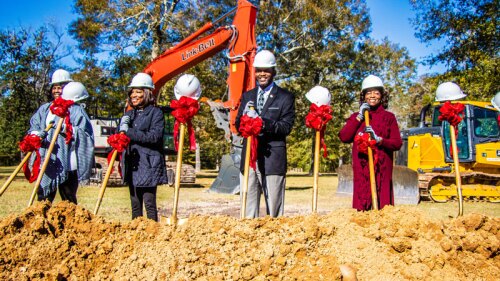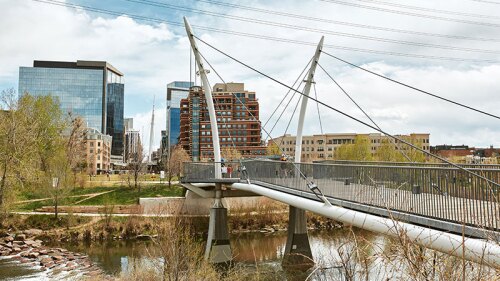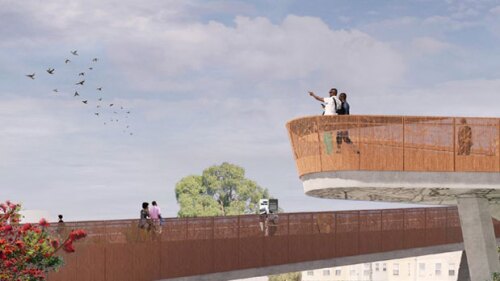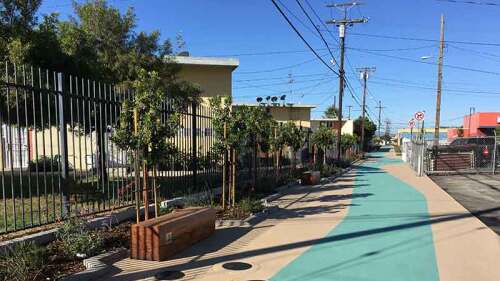The concept of focusing on leveraging public open space to create real estate value is not new in urban investment and redevelopment. But often lost in the approach to building-specific advantages and liabilities is the contextual value-add potential of open space. Activity at the front door of a property—whether office, residential, retail, hotel, or other use—can sometimes hurt real estate value. But when properly nurtured and perceived as an amenity, activity can provide tremendous upside. Though it is a tale of urban revitalization that started decades ago, Bryant Park still demonstrates the ability of public spaces to create and add real estate value. And, today, other notable developments are capitalizing on new and improved parks.
Thirty years ago, in response to a perceived public need for a public space worthy of the soon-to-be-renovated main branch of the New York Public Library, the city embarked on a multiyear effort to rejuvenate Bryant Park. Today, the wildly successful result attracts hordes of people on regular, nonevent days, and the park has featured prominently in the emergence of a more welcoming New York City. But often lost in the accolades is the tremendous effect the rejuvenated park has had on the real estate submarket.
After Bryant Park was completed and reopened in 1992, the park renovation and its new management structure had created a strong amenity for the local office market, Ernst & Young concluded in its 2002 study How Smart Parks Investment Pays Its Way. Similarly, the removal of undesirable park elements—among them an active drug trade, prostitution, a persistent urine odor, overflowing trash cans—eliminated a drag on the submarket. As a result, asking rents of buildings bordering the park outperformed those in surrounding submarkets. As better tenants were attracted, the credit profiles of buildings improved and a virtuous cycle ensued whereby the market value of real estate bordering the park increased.
For example, the Grace Building on 42nd Street saw asking rents rise rapidly after the park opened—climbing more than 114 percent through 2002, according to the Ernst & Young study. Competitive submarkets did not fare quite as well over the same period: asking rents rose 67 percent at Times Square, 55 percent at Grand Central Terminal, and 41 percent at Rockefeller Center.
A $10-per-square-foot ($108 per sq m) increase in rent at the Grace Building translated to $13 million in additional rent for the 1.3 million-square-foot (121,000 sq m) building, says Dan Biederman, founder and head of the Bryant Park Restoration Corporation. Using a capitalization rate of 6 percent, the increase in value was $216 million, according to an owner of the Grace Building at the time. With 26 buildings and 10 million square feet (930,000 sq m) of space in the district fronting the park—nearly all office space, except for the Bryant Park Hotel—Bryant Park created over $1 billion in real estate value, the owner calculates.
But that was a decade ago. A more recent example of the park adding value is Bank of America’s $2 billion building, completed in May 2010. The 2.1 million-square-foot (195,000 sq m), 1,200-foot-tall (370 m) tower was developed and is managed by the New York–City based Durst Organization. Located at the corner of 42nd Street and Sixth Avenue, the building is called the Bank of America Tower at One Bryant Park. Adopting the name of the park and capitalizing on its image and popularity were at the forefront of the development.
“Bryant Park is integral to the building’s identity,” says Jordan Barowitz, director of external affairs for the Durst Organization. “The building’s principal facade is oriented to the park to maximize views from and of it. The park serves as the building’s frontyard, providing the ultimate amenity for its tenants. One Bryant Park’s workers swarm into the park on nice days to eat lunch, take advantage of the park’s programming, and clear their heads.” In short, construction of a $2 billion building was in part prompted by a key amenity—public open space at its front door.
Continuing that trend, Hines announced in mid-June a deal with JPMorgan Chase to finance construction of a 470,000-square-foot (44,000 sq m) office tower on Sixth Avenue overlooking Bryant Park and to be known as 7 Bryant Park. Similarly, commenting on New York City’s much-lauded High Line, Amanda Burden, the city’s planning director, remarked in a June 2011 New York Times article that apartment prices in one building bordering that park have doubled since it opened. And, last, in a nod to Central Park—always a prized amenity in crowded New York City—the parkside premium for the typical apartment sale was, “more than double that for apartments in surrounding neighborhoods last year,” according to a May 2012 article in the Wall Street Journal.
Responding to such examples in New York City and elsewhere, cities are becoming smarter when implementing urban revitalization strategies. Increasingly, public spaces are the centerpieces of such endeavors and are growing in importance and exposure as the great urban migration continues.
In “Leveraging Real Estate Value with Public Open Space,” an August 2010 white paper, Matthew Wetli, an associate at St. Louis–based Development Strategies, noted a number of specific examples:
- New Town St. Charles in suburban St. Louis: “Land premiums for lots fronting canals are roughly 50 percent.”
- Upper Albany, Columbus, Ohio: Homes fronting the village green garner 25 percent premiums.
- Clayton, Missouri: Office properties in the business district fronting Shaw Park “achieve the highest lease rates in the St. Louis region, and operate at high occupancies.”
Wetli also cited Texas A&M University professor John L. Crompton, who has found that public parks in the Dallas/Fort Worth region have a measurable effect on real estate values. Crompton’s study “demonstrated a 20 percent property premium for lots within 100 feet of parks, a 10 percent premium at 300 feet, and a negligible premium at roughly a quarter mile,” Wetli wrote. Although not all parks will have such a measurable impact—location, maintenance, local neighborhood characteristics, and other factors also play a role—there is certainly reason to believe in the power of public space to create real estate value.
Ben Donsky, project manager for Biederman Redevelopment Ventures (BRV), the private consulting company run by Dan Biederman of the Bryant Park Restoration Corporation, notes another example—Museum Tower in Dallas. “In addition to adding value to existing assets, great public spaces create better development opportunities,” he says. “The new 42-story Museum Tower in Dallas’s Arts District, for instance, was originally proposed in 2007 following the announcement of $40 million being committed to the development of Klyde Warren Park.” This five-acre (2-ha) park, Donsky explains, is currently being built as a deck over the Woodall Rodgers Freeway; it will include a promenade, a botanical garden, a children’s garden, a pavilion, a stage, an iconic fountain, and other features. “It’s hard to imagine a luxury residential building bordering a submerged expressway, but easy to imagine such a project next to a world-class park,” he notes.
In another BRV project, Prudential announced in March plans to build an office tower in Newark, New Jersey, across the street from the six-acre (2.4-ha) Military Park, which is being revitalized. The Newark-based Berger Organization LLC, which owns most of the property on the Park Place side of the nearly triangular park, in a recent press release specifically cited revitalization of the park and noted its potential for value creation.
Donsky notes that owners are “thinking more broadly about public space, understanding that it’s not just parks and plazas.” Equity Office, the private owner of South Station in Boston, a major northeastern transit hub, is in the process of transforming the building’s public spaces into an “indoor park” with an eye toward improving station activity and retail sales, which in turn will boost rents, says Donsky. BRV was hired to help energize the space. BRV was also brought in to advise on programming the public, mostly outdoor spaces at City Place Mall, a traditional shopping mall in Silver Spring, Maryland, with the goal of retaining and attracting tenants.
A high-quality public realm can attract more people, which translates into more shoppers and revenue. Nick Egelanian, president of SiteWorks Retail, an Annapolis, Maryland–based retail consulting firm, also recognizes the role high-quality public spaces play in creating value at retail centers. “Without good public spaces, you’re relying entirely on the quality of the shops alone, and very few places work on the quality of shops alone,” Egelanian says. Specialty retail thrives on emotion, on the ability of shops to convince a shopper that they should spend their precious time and money in their place of business. Likewise, he adds, “Good public spaces evoke a strong emotional reaction.” This is the key to specialty retail and is why, by connecting the dots, retailers should also consider the value of public spaces in differentiating their real estate and making it the chosen destination over the countless other options vying for consumers’ time.
ULI’s priorities, though geared toward real estate and land use, could similarly be directed at public spaces:
- Promoting intelligent densification and urbanization. The relationship between a high quality of life and open space is undeniable. A dynamic society generates a thriving economy, and public spaces add to urban dynamism.
- Creating resilient communities. Adapting and reusing existing real estate to eliminate obsolete space creates thriving communities. Using open space as a catalyst or amenity for this reuse makes sense economically and socially.
- Understanding demand and market forces. Not all public space will automatically be successful in creating real estate value. Understanding what the market wants short term versus what it needs long term is still critical. Balancing public and private interests in terms of how they affect land use decisions and development is also of utmost importance.
- Connecting capital and real estate through value. Generating value in the built environment that is greater than its cost is a cornerstone of leveraging public space to create real estate value. This is also among the best ways to ensure the attractiveness of real estate as an investment.
- Integrating energy, resources, and uses. Public space helps reduce the negative impact of the built environment on natural resources and the climate.
Jonah Lehrer notes in his book Imagine: How Creativity Works, “This is the purpose of cities: the crowded spaces force us to interact.” Crowded spaces become that way because people want to be there, for a host of reasons. Crowds in the real estate realm translate into demand, and demand leads to value creation. Although public space is not a panacea for urban ills, it has the potential to be another arrow in the quiver full of real estate development and investment strategies.




